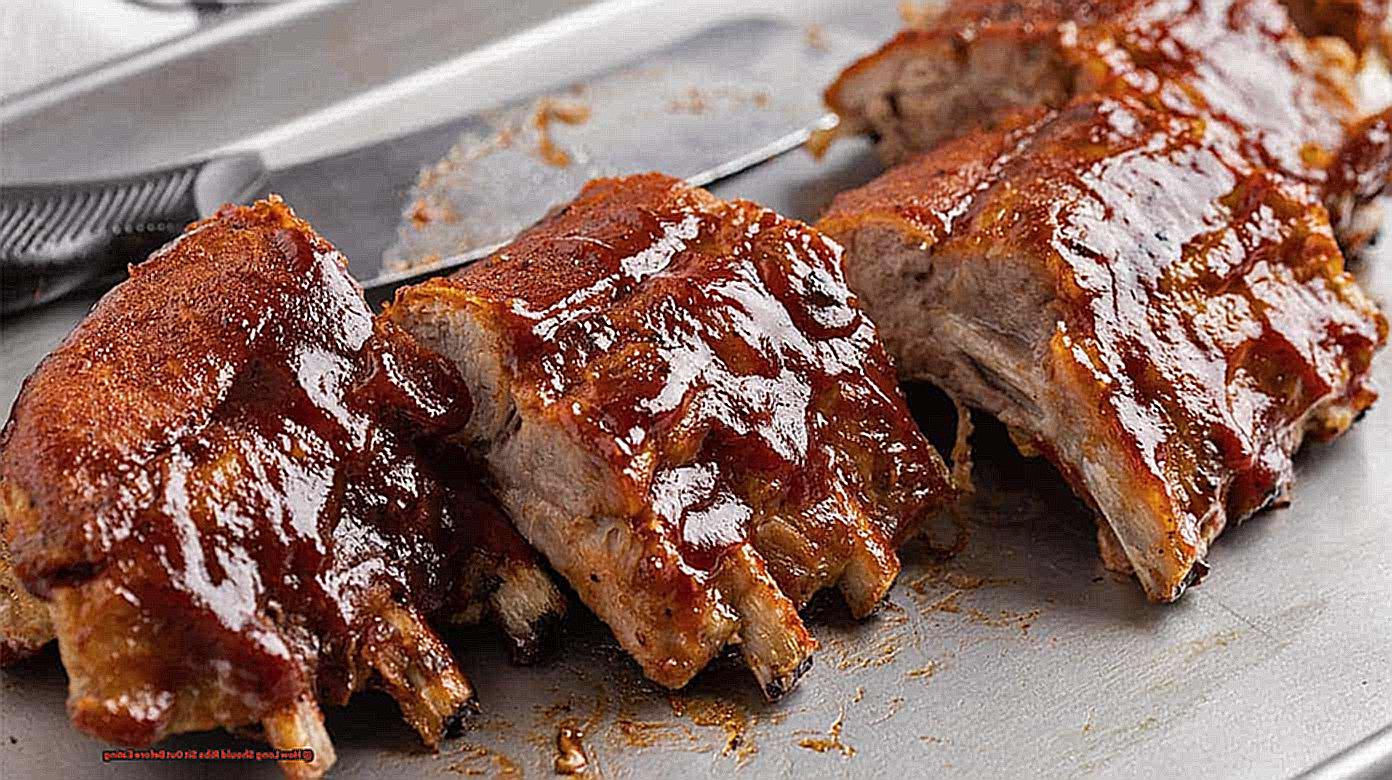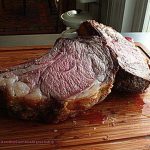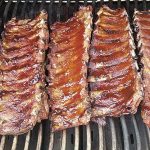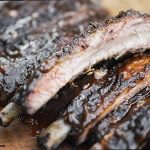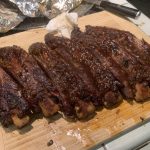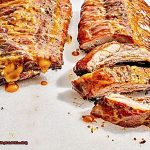Imagine this: you’re at a summertime cookout, surrounded by loved ones, eagerly anticipating the star of the show – mouthwatering ribs fresh off the grill. The tantalizing smell of smoky, tender meat fills the air and your stomach growls in anticipation. But then, a thought creeps into your mind – how long have these ribs been sitting out? Is it safe to eat them now or should you wait a bit longer?
While we all love indulging in juicy ribs, food safety should always be a top priority. So let’s delve into the question of how long ribs should sit out before being devoured. Here are some important points to keep in mind:
- As a general rule, perishable foods should not be left at room temperature for more than two hours.
- This includes cooked meats like ribs, which can quickly become a breeding ground for harmful bacteria if left out too long.
- If you plan on serving your ribs buffet-style or leaving them out for guests to enjoy throughout the day, it’s crucial to keep them on ice or in a cooler to maintain a safe temperature.
- Leftover ribs should be promptly refrigerated within two hours of being served and consumed within 3-4 days.
- When in doubt, trust your instincts – if the ribs look or smell questionable, it’s best to err on the side of caution and discard them.
So, there you have it – when it comes to savoring delectable ribs, timing is everything. Remember these tips and you can relish your favorite BBQ dish without any worries. Now go fire up that grill and get ready to dig into those perfectly cooked and safe-to-eat ribs.
Contents
- 1 Understanding the Importance of Resting Ribs
- 2 The Science Behind Resting Ribs
- 3 Optimal Resting Times for Different Types of Ribs
- 4 How to Properly Rest Ribs for Maximum Flavor and Tenderness
- 5 Common Mistakes to Avoid When Resting Ribs
- 6 Using the Resting Time to Enhance Your Ribs’ Flavor Profile
- 7 Tips for Choosing High-Quality Ribs for Optimal Results
- 8 Conclusion
Understanding the Importance of Resting Ribs
Resting ribs before indulging in them is a crucial step in achieving ribs that are perfectly tender and full of flavor. This process allows the meat juices to redistribute, resulting in a more succulent final product. Here are some reasons why taking the time to rest your ribs is essential:
- Heat Distribution: Allowing your ribs to rest for 15-30 minutes at room temperature helps evenly distribute the heat trapped in the meat, stopping the cooking process. This prevents overcooking and keeps the meat tender.
- Enhanced Flavor: Resting also gives the meat juices time to reabsorb into the meat, creating a more flavorful bite throughout the ribs. This ensures that the ribs remain juicy and locks in their smoky flavor.
- Avoid Drying Out: Skipping this step can result in drier ribs as the meat continues to cook even after being removed from heat.
- Proper Resting Time: The recommended rest time for smoked ribs is 15-30 minutes, while beef ribs may require up to 30 minutes. It is important not to let them rest for too long, as they may start to cool off and lose their desired temperature.
To properly rest your ribs, remove them from direct heat and tent them loosely with foil or place them in an insulated cooler. This not only helps evenly redistribute heat but also keeps the ribs warm until they are ready to be served.
Some tips for efficiently resting your ribs include using good quality ribs and not overpowering their natural taste with excessive seasonings or sauces.
The Science Behind Resting Ribs
Resting ribs before indulging in a BBQ meal is a crucial step that shouldn’t be overlooked. The Science Behind Resting Ribs highlights some important reasons why it is essential to give ribs a short rest before consumption:
- Achieve Even Heat Distribution: Cooking ribs traps heat inside the meat, and allowing them to rest for 0-0 minutes allows the heat to evenly distribute throughout the meat, ensuring each bite is cooked to perfection.
- Enhance Flavor Absorption: Resting ribs also gives time for the meat juices to reabsorb into the meat, creating a more succulent and flavorsome bite. This is particularly important for smoked ribs, as it allows the smoke flavor to penetrate deeper into the meat.
- Prevent Drying Out: Cutting into ribs immediately after cooking will cause all the juices to spill out, resulting in dry and tough meat. Resting ribs allows the juices to redistribute, keeping the meat moist and tender.
- Prepare Other Items: Giving your ribs a short rest of about 0- minutes also provides you with enough time to prepare other items for your BBQ meal. This way, all dishes can be served hot and fresh simultaneously.
- Serve at Optimal Temperature: Letting ribs rest also ensures that they are served at the perfect temperature. Serving them too soon may result in them being too hot to comfortably eat.
Resting ribs is an integral part of achieving the perfect BBQ experience, enhancing both the flavor and texture of the ribs while also making serving more convenient.
Optimal Resting Times for Different Types of Ribs
The ideal resting times for different types of ribs vary depending on the method used (foil vs cooler) and the type of rib. However, the recommended average resting time for ribs is between 10-20 minutes before serving. This allows for the redistribution of juices and helps prevent dryness.
See the table below for a summary of the recommended resting times for various types of ribs:
| Rib Type | Recommended Resting Time |
| Pork Ribs | 10-20 minutes |
| Beef Ribs | 20-30 minutes |
| Lamb Ribs | 10-15 minutes |
| Baby Back Ribs | 10-20 minutes |
| St. Louis Style Ribs | 15-20 minutes |
| Spare Ribs | 15-20 minutes |
| Country Style Ribs | 15-20 minutes |
| Beef Short Ribs | 20-30 minutes |
| Pork Spare Ribs | 15-20 minutes |
It is worth noting that beef ribs may require a slightly longer resting time due to their meatiness. During this period, the ribs will continue to cook and reach the desired level of doneness. It is recommended to stop cooking just before reaching the desired level of doneness, as the ribs will continue to cook during resting.
While using foil to rest the ribs is a common method, utilizing an insulated cooler can also be effective in keeping the ribs warm and juicy. A cooler can keep ribs warm for up to 2-3 hours without compromising their quality. However, it is important to avoid the “danger zone” when smoking at low temperatures, as this can result in longer cooking times and affect the taste of the ribs.
In conclusion, the optimal resting time for different types of ribs ranges from 10-30 minutes depending on the type of rib and preferred resting method. It is crucial to rest the ribs covered in foil or butcher paper immediately after cooking to seal in the juices and maintain flavor. While a good cooler can extend the resting time up to 2-3 hours if necessary, it is recommended not to exceed 20 minutes of resting time to prevent cold and dry ribs. Remember to always check the internal temperature of the ribs while resting and follow expert tips such as wrapping in foil after cooking and avoiding excessive resting time.
How to Properly Rest Ribs for Maximum Flavor and Tenderness
For maximum flavor and tenderness, it is recommended to rest your ribs for a minimum of 15-30 minutes. However, the resting time may vary based on the type and size of the ribs. Resting is a crucial step in the cooking process as it allows the meat to retain its juices, resulting in a more succulent and flavorful bite. Additionally, the internal temperature of the meat continues to rise during resting, reaching its optimal level for tenderness.
When it comes to resting ribs, the type of ribs and their quality play a significant role. For smoked pork ribs, it is best to remove them from direct heat and tent them loosely with foil or place them in an insulated cooler. This allows the meat to relax, and the juices to redistribute evenly throughout the ribs. On the other hand, larger beef ribs may require a longer resting time to achieve maximum tenderness.
It is also possible to season or sauce the ribs during resting, but it is essential to be mindful not to overpower the natural flavor of the meat. The quality of the ribs is crucial for both efficient resting and overall flavor and tenderness.
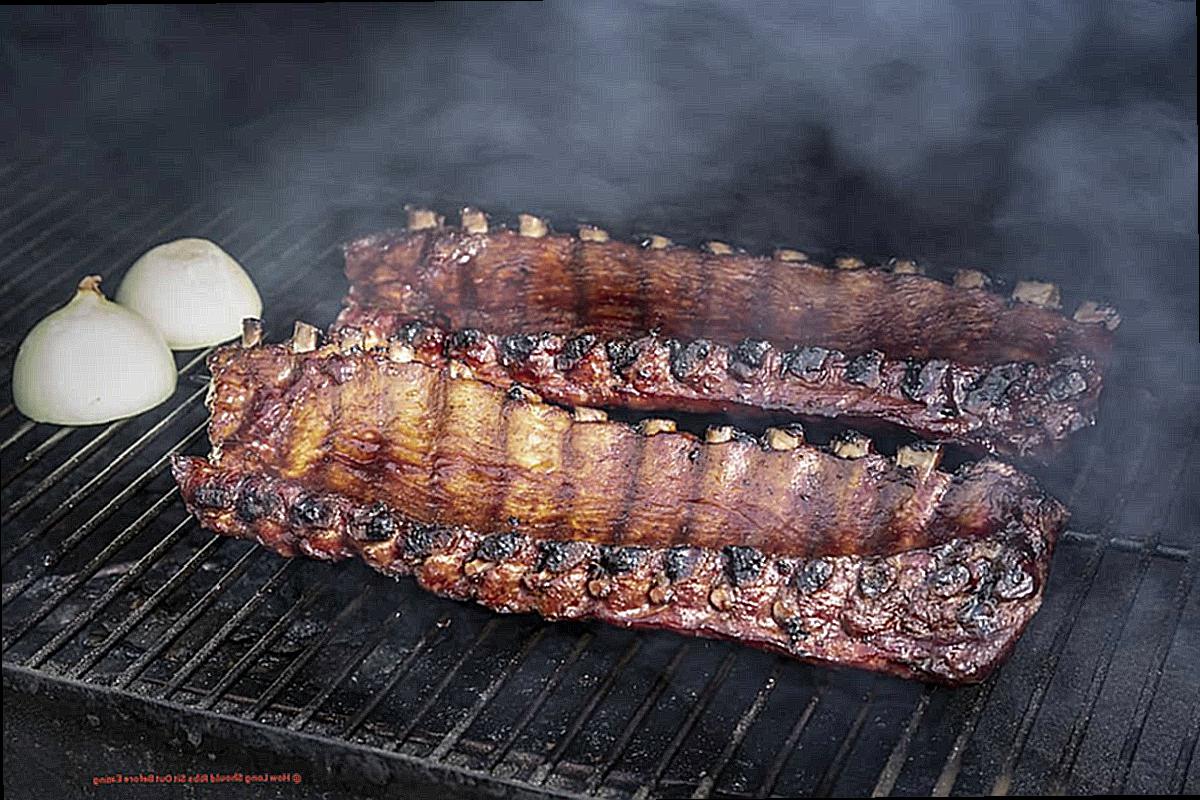
High-quality ribs will retain more juices, resulting in a more succulent end product. Therefore, it is vital to choose good quality ribs for the best results。
Common Mistakes to Avoid When Resting Ribs
When it comes to resting ribs, there are a few common mistakes that should be avoided at all costs. One of the biggest mistakes is leaving the ribs out at room temperature for too long. This can lead to bacteria growth and potential food poisoning. Another mistake is resting the ribs in a warm or hot environment, which can cause them to dry out and lose their tenderness.
But it’s not just about temperature. Cutting into the ribs too soon can also have negative effects. When you cut into the ribs too early, all the juices will escape, leaving you with dry and tough meat. It’s important to resist the temptation and let the ribs rest for at least 10-15 minutes before slicing into them.
Proper seasoning is also crucial for delicious and succulent ribs. Many people make the mistake of not seasoning their ribs before resting them. This can result in bland and flavorless meat. Make sure to generously season your ribs with your favorite spices and marinades before resting them.
To sum it up, avoiding these common mistakes is key to achieving the perfect ribs. Remember to keep your ribs at a safe temperature, avoid cutting into them too soon, and properly season them before resting. By following these tips, you’ll be rewarded with juicy, flavorful ribs that will have everyone asking for seconds.
So next time you’re planning on resting ribs, keep these tips in mind and you’ll be sure to impress your friends and family with your perfectly cooked and seasoned masterpiece.
Using the Resting Time to Enhance Your Ribs’ Flavor Profile
Resting time is a vital step in elevating the taste of your ribs. When you remove the ribs from the grill or smoker, they are still cooking internally and the juices are settling. Allowing them to rest allows these juices to evenly distribute throughout the meat, resulting in a more flavorful and succulent end product.
During the cooking process, the proteins in the ribs contract, forcing out moisture. Resting allows these proteins to relax, helping to retain moisture and ensure juicy ribs. Moreover, resting gives the rub and other seasonings time to fully penetrate the meat, creating a more well-rounded and flavorful taste.
| Resting Time | Flavor Profile | Benefits |
| 30 minutes | The rub’s flavor is evenly spread throughout the meat. | – Helps retain moisture and juiciness
|
| 1 hour | The flavors have melded together and intensified. | – Increased depth of flavor
|
| 2 hours or longer | The ribs are incredibly flavorful with a tender texture. | – Maximum depth of flavor
|
The exact amount of resting time needed depends on personal preference and cook time. However, it is generally recommended to let the ribs rest for at least 30 minutes to an hour before serving. For optimal results, allow them to rest for 2 hours or longer.
One important aspect to note is that during resting, the ribs will continue to cook slightly from the residual heat. Therefore, it is crucial to remove them from the heat a few degrees before reaching the desired internal temperature. This will prevent them from being overcooked and dry.
In conclusion, resting time is a crucial factor in enhancing the flavor profile of ribs. It allows for juices to redistribute and flavors to fully permeate the meat, resulting in a more flavorful and moist end product.
Tips for Choosing High-Quality Ribs for Optimal Results
When it comes to achieving the best results for your BBQ, there are multiple factors to consider when selecting high-quality ribs. These include freshness, cut of meat, marbling, bone structure, and source. By paying attention to these elements, you can guarantee that your ribs will be top-notch for your BBQ.
Freshness
To ensure maximum flavor and tenderness, it is best to purchase ribs as close to the cooking date as possible.
Cut of Meat
There are three main types of ribs to choose from – spare ribs, baby back ribs, and St. Louis-style ribs – each with a unique taste and texture. Knowing your preference beforehand is crucial when making a purchase.
Marbling
Look for consistent marbling throughout the meat, as this helps keep the meat moist and adds flavor during cooking.
Bone Structure
Opt for ribs with straight bones that are not excessively curved or broken to ensure even cooking and easier handling on the grill.
Source
It is important to purchase ribs from a reliable and trusted source, such as a local butcher or farmer’s market. This guarantees high-quality meat that has been properly handled and stored.
Proper resting of ribs is also crucial in achieving tender and flavorful results. It is recommended to rest smoked ribs for 15-30 minutes and beef ribs for up to 30 minutes by removing them from direct heat and covering them with foil or placing them in an insulated cooler.
Conclusion
In conclusion, when it comes to indulging in succulent ribs, timing is crucial. Food safety should always be a top priority, and leaving ribs out at room temperature for more than two hours can lead to potential health risks. On the other hand, properly resting ribs is essential for achieving maximum tenderness and flavor. The recommended resting time varies depending on the type of rib and cooking method, ranging from 10-30 minutes. It is vital to avoid common mistakes such as leaving ribs out for too long or cutting into them too soon.
When selecting high-quality ribs, pay attention to factors like freshness, cut of meat, marbling, bone structure, and source. These elements can greatly impact the taste and texture of your dish. By following these tips and tricks, you can savor your favorite BBQ dish without any worries and impress your loved ones with perfectly cooked and safe-to-eat ribs.

